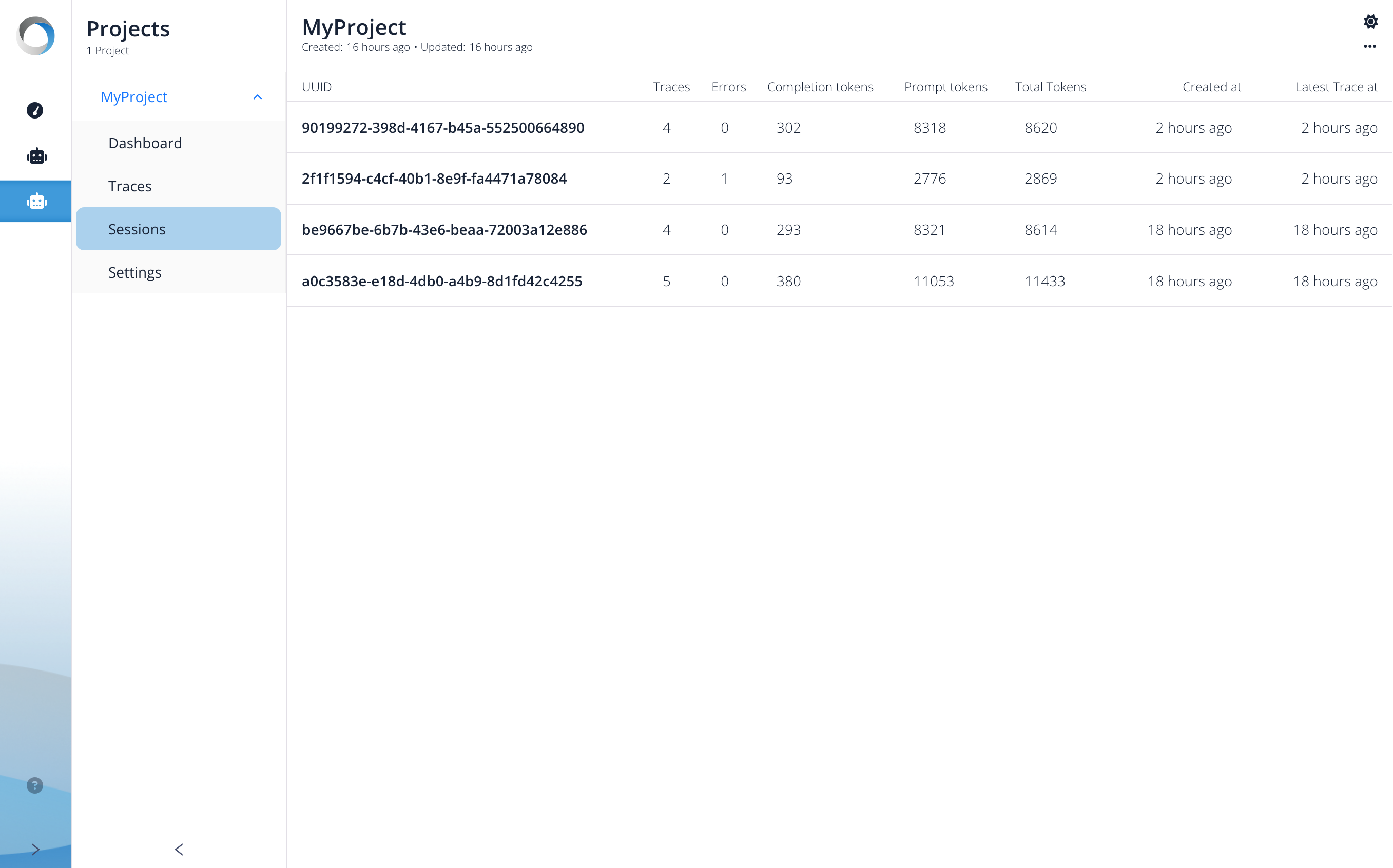Sessions
The Sessions section allows you to group and analyze sequences of interactions, typically corresponding to a single user's engagement with your application over a period.
What is a Session?
A Session groups together multiple related Traces. Think of it as a container for a complete user conversation or workflow. For example, if a user interacts multiple times with a chatbot (asking questions, getting responses), all the individual requests (traces) made during that interaction can be linked together under a single Session ID.
Grouping traces into sessions is useful for:
- Analyzing a user's complete journey or conversation flow.
- Calculating aggregate metrics (like total tokens or errors) across an entire interaction.
- Debugging issues that might span multiple requests within a single user engagement.
- Understanding how users interact with your application over time.
The Sessions List View
This view provides a list of all recorded sessions, summarizing the activity within each one.

Session Information:
Each row in the table represents a single session and provides aggregated information:
- UUID: The unique identifier for this specific session.
- Traces: The total number of individual traces that have been associated with this session.
- Errors: The total count of traces within this session that contained one or more errors. This helps quickly identify sessions where users might have encountered problems.
- Completion tokens: The sum of completion tokens across all traces belonging to this session.
- Prompt tokens: The sum of prompt tokens across all traces belonging to this session.
- Total Tokens: The grand total of tokens (prompt + completion) consumed during the entire session, indicating the overall LLM cost or usage for that interaction.
- Created at: The timestamp when the first trace associated with this session was recorded.
- Last Trace at: The timestamp of the most recent trace recorded within this session, indicating the time of the last activity.
From this list, you can typically click on a session's UUID to drill down further, often leading you to a filtered view of the Traces list showing only the traces belonging to that selected session.
Note: Human-in-the-loop within LangGraph, it may lead to an error.